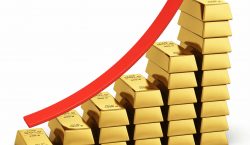

May’s annual consumer price inflation slowed to 6.3% from 6.8% in April, with food prices finally cooling.
May’s inflation rate, which was also slowed by an easing in fuel prices, is the lowest since April 2022, Statistics SA said. It was also cooler than economists expected. The median expectation among economists in a Bloomberg survey was 6.5%.
The consumer price index (CPI) increased by 0.2% between April and May.
Food inflation – the prices of food and non-alcoholic beverages – eased to 11.8% from 13.9% in April, which was close to the hottest level in fourteen years.
Food inflation only increased by 0.3% between April and May – the smallest increase since November 2021.
Meat prices fell by 0.4% from April to May and were 7.1% higher than a year before – from 9.5% in April. Bread and cereals inflation slowed to 18.1% in May from 20.8% in April.
Prices for oils and fats are now 2.4% cheaper than a year before.
But sugar, sweets and desserts grew more expensive – increasing by 11.9% in the year to May – from 10.7% in April.
From April to May, the price of white sugar increased sharply by 2.7% and slabs of chocolate by 2.9%.
In the 12 months to May, the average price of a 2.5 kg bag of white sugar increased from R49.68 to R53.00. The average price of a slab of chocolate (80 grams) rose from R17.11 to R20.26 over the same period.
Prices of cold beverages were 10.5% higher in May from a year before – the highest rate since 2019.
Statistics SA also reported that restaurant prices increased by a sizeable 1.2% between April and May – taking the annual rate for restaurants to 7.4%.
Fish and seafood dishes were 11.3% more expensive, followed by pizza (up 9.3%) and red meat-based products (up 9.0%).
Between April and May, the prices of pies were hiked by 2.3%, followed by hikes of around 2% for hot beverages, poultry-based products, hamburgers and red meat-based products.
While petrol prices were hiked in May, fuel prices were only 3.5% higher than a year before – from 5.0% in April. However, vehicle prices increased to 7.5% – the highest increase since 2017.
Statistics SA also noted sharp monthly price increases for pain killers (+3.0%) and vitamin and mineral supplements (+6.6%).
Impact on rate hikes?
The latest CPI number will reassure the Reserve Bank’s monetary policy committee, which has already hiked interest rates by 475 basis points in an effort to cool inflation.
Last month, interest rates were increased by 50 basis points. This came in the wake of a rand crash triggered by US allegations that Russia received arms in South Africa has raised inflation risks. A weaker rand fuels inflation.
South Africa imports almost all its fuel (in dollars). Other imports will also be more expensive, but also locally produced maize and wheat. Their prices are determined by international prices, usually in dollars.
In addition, load shedding is pushing costs and prices higher.
Reserve Bank Governor Lesetja Kganyago took a less hawkish stance about rate hikes at the last meeting.
He said monetary policy had now reached “restrictive territory” (hurting the economy).
“We have got to see the effects of this policy stance and what it means.”
Some economists expect the first interest rate cut only at the start of next year. — bbc.com